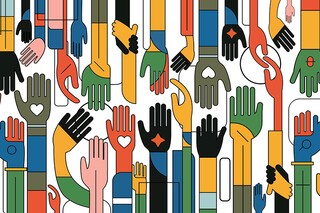Expanding the pie to drive alignment around inclusion efforts: 3 tactics
Corporations made commitments — through words, actions and resources — to recruit, retain and foster cultures in which racial and gender minorities could thrive


In recent years, leaders expanded their diversity, equity, inclusion and belonging (DEIB) programs in response to the overwhelming public support for social justice causes like #MeToo, #BLM and #StopAAPIHate. Corporations made commitments — through words, actions and resources — to recruit, retain and foster cultures in which racial and gender minorities could thrive.
Now, newly empowered chief diversity officers are forced to defend themselves amid political currents that have turned against them. Students for Fair Admissions (SFFA) v. Harvard (2023), which ruled that race could not be used as a factor in university admissions, amplified the voices of critics decrying corporate DEIB efforts as ineffective, unfair or even illegal. Thirteen attorneys general issued a statement opposing corporate DEIB plans and warned corporate leaders to re-examine practices and eliminate quotas. Opposition to affirmative action and diversity goals is not new, but with an upcoming presidential election, politicians are positioning themselves as either for or against DEIB.
In the aftermath of SFFA, how should corporate leaders respond to the polarization surrounding DEIB? How can those seeking to create diverse, equitable and inclusive workspaces bring opposing sides into alignment?
Experience has taught us, as educators and DEIB professionals, that the answer lies in using a negotiation mindset. We challenge you to consider the various stakeholders in an organization as taking part in a multiparty, multi-issue negotiation regarding the meaning, direction and implementation of DEIB efforts.
Imagine a sponsorship program designed to increase numbers of women and minorities in leadership. It should be communicated that the organization grows stronger, more profitable and more competitive with the development of more employees.
Relational capital has economic value for negotiators, and positive feelings following one negotiation can objectively influence subsequent negotiations.
Use knowledge of others’ interests to start with an easy win, which then may lead to greater support for a more challenging issue. Say there is alignment on the executive team that the company should signal its commitment to DEIB through internal and external communication channels, and the executive team’s voices need to be part of the communications.
Maybe go ahead and advance the executive team’s interests. Start small, even if just to signal organizational commitment. This visibility may then build accountability among leaders to have results that bolster their stated commitment. It may also create urgency for more substantive changes, such as alterations to recruitment processes. Stakeholders may warm up to the idea of something bigger if they see more communication about DEIB in their weekly newsletters or hear more about DEIB programming.
Fixed-pie bias is stronger in dyadic rather than multiparty negotiations, in part because having multiple players increases the likelihood of divergence in what the various parties value and where they are willing to make concessions that yield alignment.
These are challenging times for leaders who want to advance DEIB practices and goals. An integrative negotiation framework can provide leaders with a guide for how to get DEIB work done amid the changing political winds.
First Published: Apr 04, 2024, 16:28
Subscribe Now